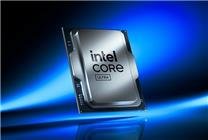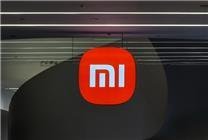Understanding iPhone 17 Flash Memory Controversy: Key Insights
- Performance Discrepancies: The iPhone 17 series (256GB models) reportedly utilizes slower flash memory compared to higher capacity versions.
- Cost Control Mechanism: Apple appears to use a mix of older and newer flash memory chips to manage production costs, impacting device performance.
- User Experience: For everyday tasks, users may not notice significant performance differences, though intensive applications could reveal slower speeds.
iPhone 17 Series: Flash Memory Controversy Explained
As the iPhone 17 series makes its mark in the smartphone market, a heated debate has emerged regarding the flash memory differences among its models. Particularly, the entry-level 256GB versions of the iPhone 17, iPhone 17 Pro, and iPhone 17 Pro Max have come under scrutiny for their performance metrics.
Performance Scores: A Closer Look
Recent tests indicate that the 256GB versions of these models utilize what can be termed "slow disks." The benchmark scores, measured using AnTuTu, have shown that these devices achieve scores ranging between 90,000 to 100,000 points, with sequential read and write speeds hovering around 1,600MB/s and 1,700MB/s, respectively. For context, this performance significantly contrasts with that of the 512GB and 1TB models, which utilize high-speed flash memory. The latter delivers impressive results, scoring approximately 150,000 points and achieving read and write speeds of up to 3,200MB/s and 4,100MB/s.
Memory Chip Variations and Implications
A notable factor contributing to these discrepancies is that the 256GB models are reportedly equipped with older flash memory chips, akin to those used in the previous iPhone 16 Pro series. This mixed-use of memory technology may be a strategic decision by Apple to keep production costs manageable.
However, for average users engaging in routine activities—like app usage and daily browsing—the speed differences may not be readily apparent. Nevertheless, under more demanding scenarios, such as 4K video editing or large file transfers, the advantages of high-speed memory become evident, highlighting the performance gap.
Factory Settings and Upgrade Challenges
In an intriguing twist, it has been revealed that all 256GB iPhone 17 models come configured in a low-speed read and write mode upon leaving the factory. This stands in contrast to higher-capacity variants, which operate in high-speed modes. While reconfiguring the read and write settings is technically feasible, the process can be prohibitively expensive. It necessitates a specialized layered motherboard, which may compromise overall system stability.
Future Considerations for Storage Expansion
Aspiring to upgrade storage presents another challenge for users. Currently, the market lacks high-speed 1TB and 2TB options worth considering. Therefore, users contemplating a capacity increase from 512GB to 1TB or 2TB should exercise caution. Professionals typically aiming for higher specs often purchase the lowest configurations, alleviating the concern of future expansion complications.
Conclusion: Balancing Performance and Cost
The ongoing flash memory debate surrounding the iPhone 17 series underscores a complex interplay between cost management and performance expectations. While the differences may go unnoticed in everyday usage, they can have significant implications for users engaging in high-demand tasks. For prospective iPhone buyers, particularly those in creative professions, keen attention to flash memory specifications could prove crucial in making an informed decision.
As Apple continues to innovate, understanding these technical nuances will help consumers navigate their purchasing choices with greater confidence.
This article explores the intricacies surrounding the iPhone 17 series to inform and guide potential buyers in understanding the importance of flash memory performance in their device selection.










